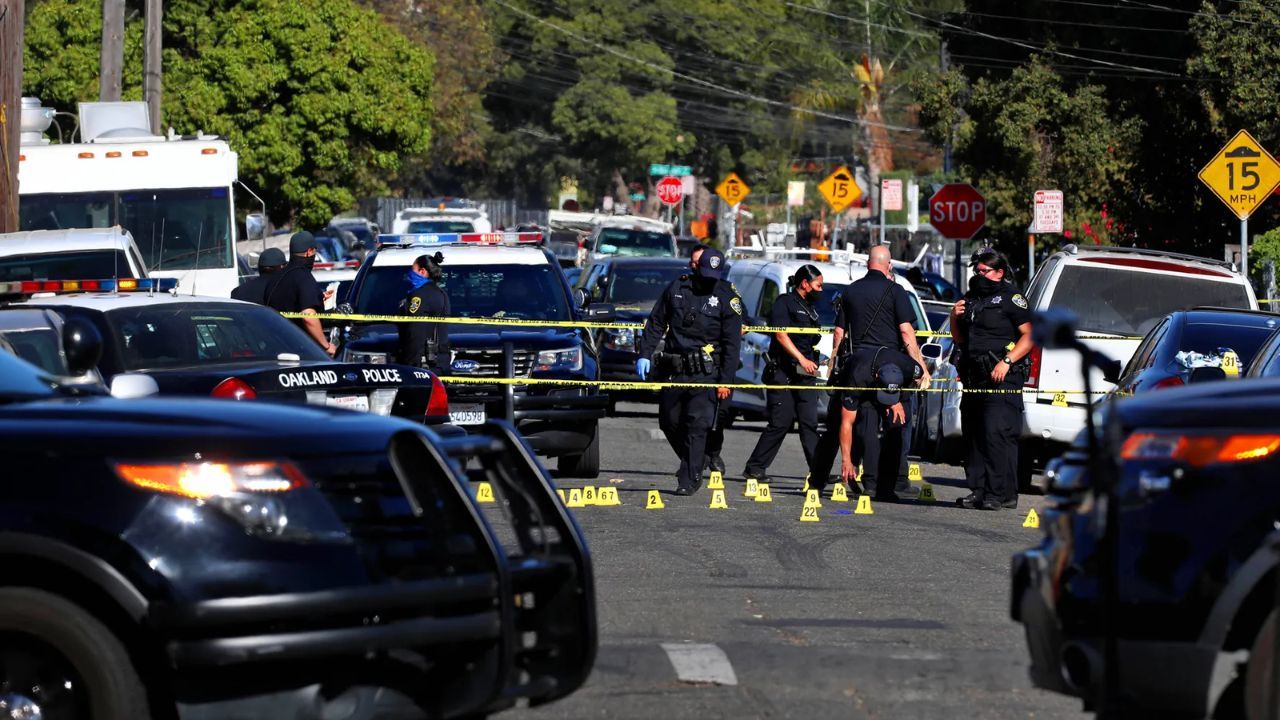In a recent report analyzing crime statistics, Dayton, Ohio, has emerged as the second-ranked murder capital in the state, showcasing a concerning trend in the city’s safety landscape. This shift in ranking sheds light on the challenges faced by Dayton and the urgent need for enhanced safety measures and law enforcement efforts to address the rising crime rates.
The Unsettling Data
The data reveals a stark reality for Dayton, with a murder rate of 34.18 per 100,000 residents, positioning it as the second-highest murder capital in Ohio. This surge in crime, particularly in violent offenses like homicides, aggravated robberies, and assaults, paints a troubling picture of the city’s security environment. The report highlights a significant increase in criminal activities, including shootings, property crimes, drug violations, and robberies, indicating a pressing need for immediate action.
What Are the Factors Contributing to the High Murder Rate in Dayton
The factors contributing to the high murder rate in Dayton include a combination of various elements that have collectively impacted the city’s safety landscape:
High Overall Violent Crime Rates: Dayton experiences a high rate of violent crimes, with 1,086 violent crimes reported per 100,000 people in 2020, significantly higher than the national average of 399 incidents per 100,000 people.
Rising Homicide Rates: Dayton reported a total of 46 murders in 2020, translating to a murder rate of 32.8 per 100,000 residents, well above the national homicide rate.
Community Challenges: Factors such as poverty, lack of opportunities, and social issues within the community can contribute to an environment conducive to criminal activities like homicides and violent offenses.
Drug Violations and Criminal Activities: The presence of drug-related crimes and criminal activities can escalate violence and contribute to the overall crime rate in the city.
Historical Trends and Socioeconomic Factors: Long-standing issues related to socioeconomic disparities, unemployment rates, and access to resources can create conditions that foster criminal behavior.
Law Enforcement Efforts: While law enforcement plays a crucial role in addressing crime, challenges in solving crimes and preventing recidivism can impact the overall crime rates.
Community Engagement: Collaborative efforts between law enforcement agencies and community members are essential to combatting crime effectively and creating a safer environment for residents.
By addressing these multifaceted factors comprehensively through targeted interventions, community involvement, and strategic law enforcement initiatives, Dayton can work towards reducing its high murder rate and improving overall safety within the city.
What Measures Are Being Taken to Address the Crime Rate in Dayton
To address the rising crime rate in Dayton, several measures are being taken by law enforcement and the community:
Proactive Policing Strategies: Law enforcement authorities in Dayton are focusing on proactive policing strategies to prevent crime and ensure public safety. By monitoring crime trends and patterns, resources are being deployed effectively to address criminal activities.
Community Engagement: Recognizing the importance of community involvement, efforts are being made to engage residents in crime prevention initiatives. Building strong relationships between law enforcement and the community is crucial for addressing the root causes of crime and enhancing safety.
Increased Police Presence: There is a recognized need for a heavier police presence in Dayton to deter criminal activities. However, challenges such as staffing issues are being addressed to ensure that law enforcement can effectively respond to community needs and build quality relationships with residents.
Crime Awareness: Community members are being encouraged to stay informed about crime in their neighborhoods and to be vigilant, especially regarding property crimes. Increasing awareness can help individuals take proactive measures to protect themselves and their communities.
Collaborative Efforts: Stakeholders, including law enforcement, community leaders, and residents, are working together to combat crime effectively. By fostering collaboration and shared responsibility, a more comprehensive approach to addressing crime in Dayton is being pursued.
These measures collectively aim to reduce crime rates, enhance public safety, and create a more secure environment for the residents of Dayton. By combining proactive policing strategies with community engagement and awareness, efforts are being made to address the underlying issues contributing to the surge in criminal activities in the city.
Conclusion
In conclusion, the recent report highlighting Dayton as the second-ranked murder capital in Ohio underscores the urgent need for comprehensive strategies to tackle the escalating crime rates in the city. By analyzing the data and understanding the challenges faced by Dayton, stakeholders can work together to create a safer and more secure environment for all residents. The findings serve as a call to action for increased vigilance, community involvement, and targeted interventions to address the root causes of crime and ensure a brighter future for Dayton.

